

By Sandra Lai
For one thing, our trip to the Simien Mountains to capture and collar wolves definitely did not start smoothly… Right before our departure from Dinsho, we were still desperately looking for some crucial missing equipment, our internal flight was suddenly cancelled, the car waiting for us up there broke down right after loading up the field material… It would take a few days for everything to settle down and for all the people involved to be able to gather in Simien Mountains. The Bale team, which consisted of me, Muktar (EWCP veterinary team leader) and Alo (EWCP monitoring team leader and expert trapper), finally joined our Science Director, Jorgelina, and the Amhara and Simien team already camping in Kechemo Buahit, the territory of the first targeted pack.
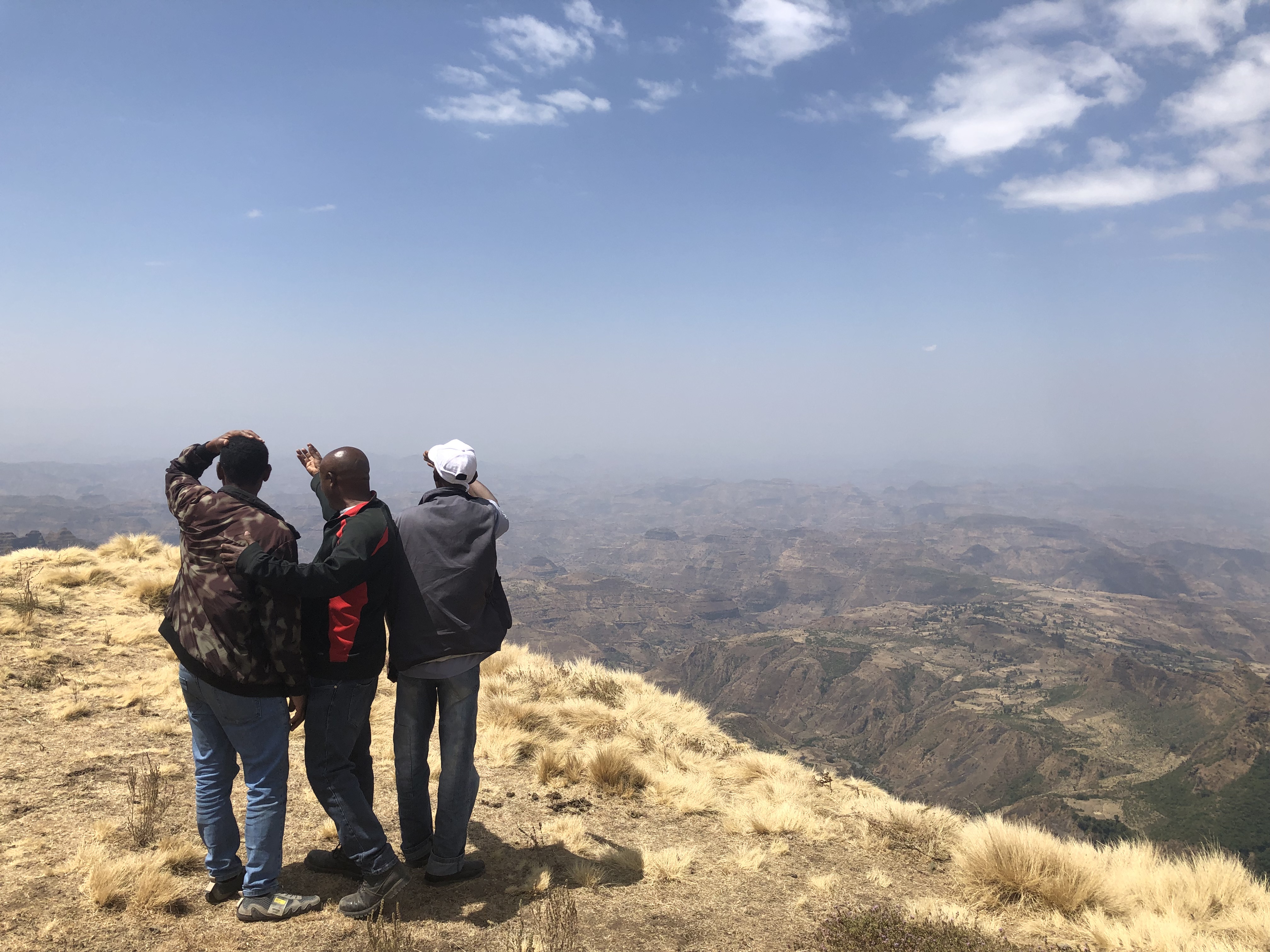
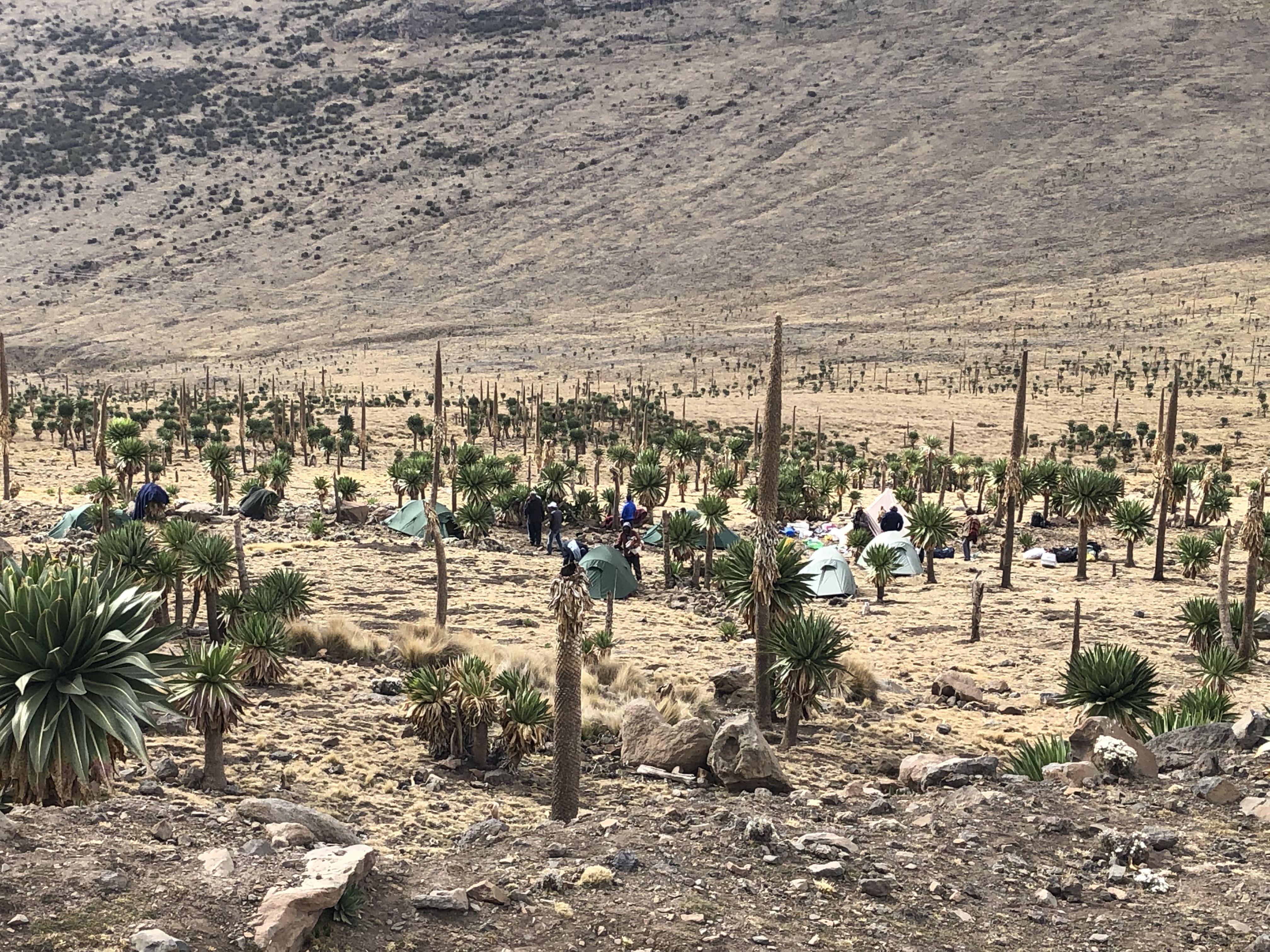
It was the very first time Ethiopian wolves were trapped in Simien. As soon as we arrived, in the backdrop of an amazingly beautiful sunset over the hills, Alo was out there setting up leghold traps (‘Soft-Catch’ traps are especially made to capture wild carnivores safely). I used to live trap Arctic foxes with a similar model, albeit of smaller size, but I was keen to learn the setting for Ethiopian wolves. “We make a garden”, as Claudio told me before. Indeed, that was quite true. Using that ‘horticultural’ set up, I would soon see that Ethiopian wolves could be very effectively trapped…
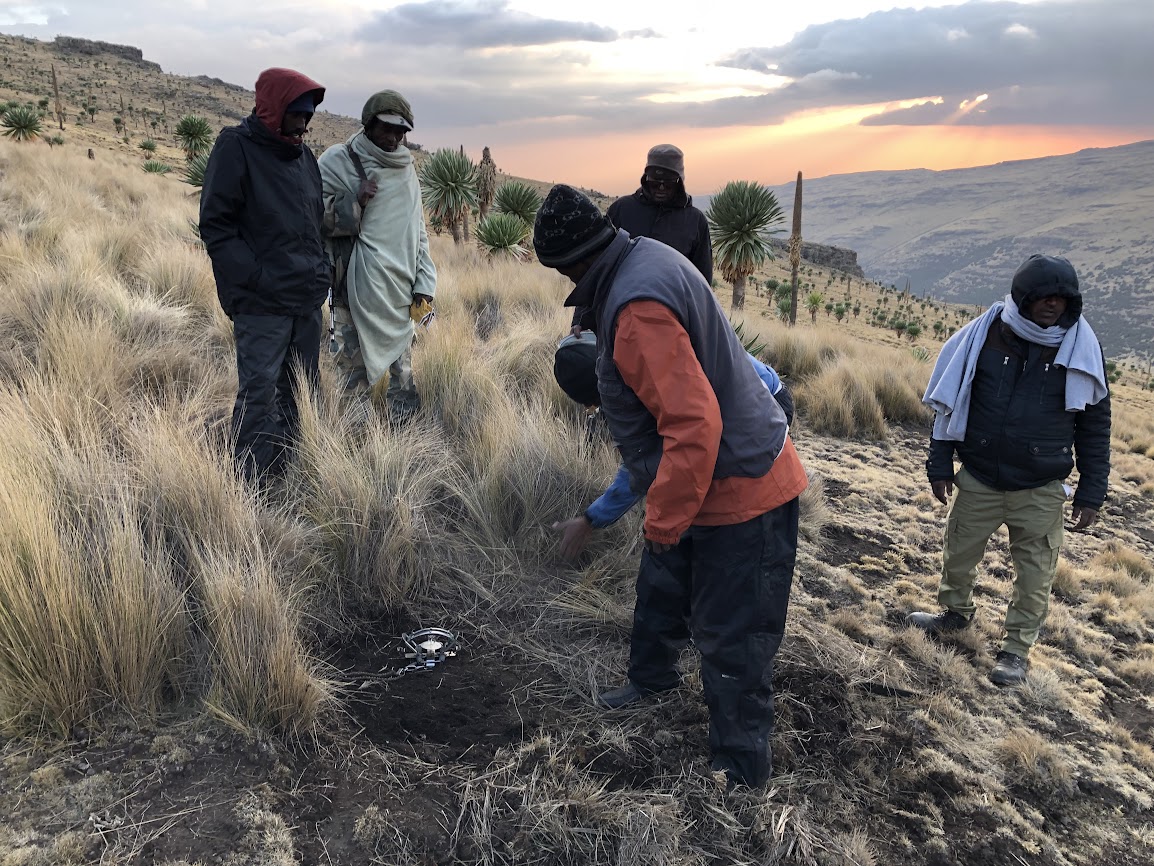
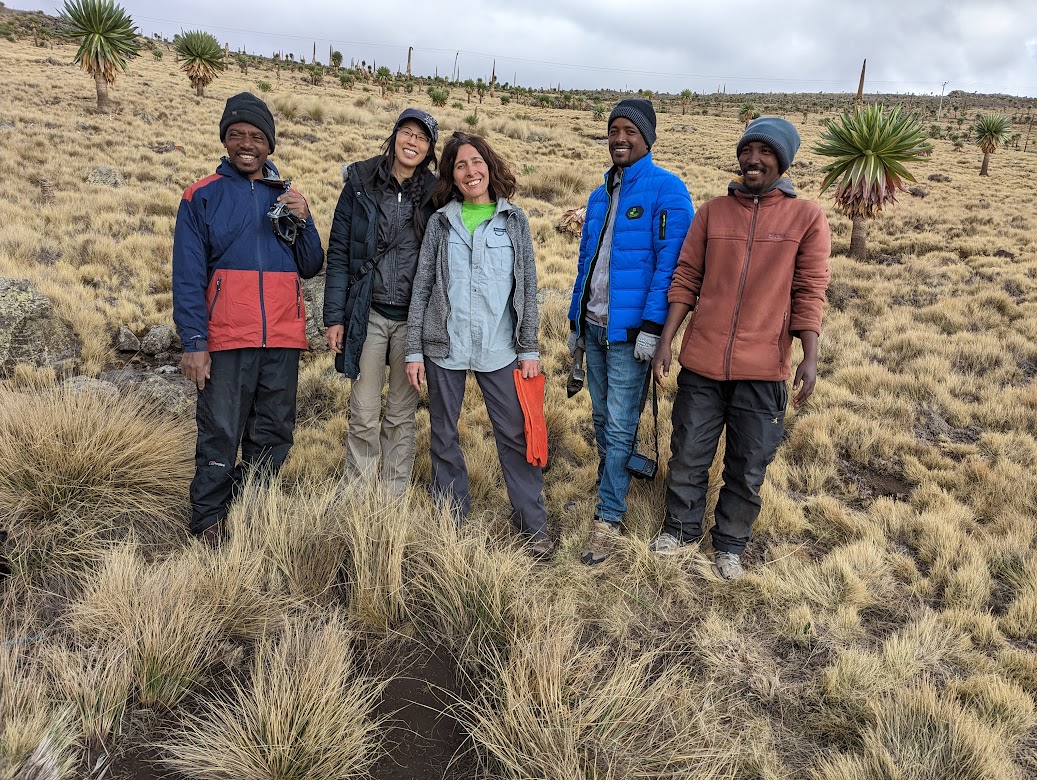
Compared to the Bale Moutains, the famous Simien Mountains appear as countless very rugged and steep cliffs with slopes covered by guassa (an endemic Festuca grass), giant lobelias (Lobelia rhynchopetalum) and Erica bushes. The Erica at some places even grows to form trees and thick forests. Gelada baboons (Theropithecus gelada) and Walia ibex (Capra walie)—also Ethiopian endemics— are among the species roaming in the area. In Simien, the wolf packs are usually smaller than in Bale and a lack of reproduction is often observed. For instance, out of the six focal packs in Simien, only two have pups this year. Some packs have not been breeding for 2-3 years in a row. Packs seldom have more than three pups, while in Bale, it is not usual to see five or seven pups. Our target was to trap four focal packs: Kechemo Buahit, Sebat Minch, Chenek and Ayenameda. Each pack is on top of a mountain peak. The terrain is difficult for walking and trapping, but with Alo’s long expertise and the knowledge of the packs from Getachew, Andualem and Jejaw, the Simien wolf monitors, we had our first capture by the second night. A male wolf. Expertly handled, the wolf was soon ear-tagged, vaccinated, sampled, measured and then released wearing a GPS collar. This new technology will collect important data on movements, behaviours and daily activity rythms that will help us understand why the wolves seem to do less well than in Bale.
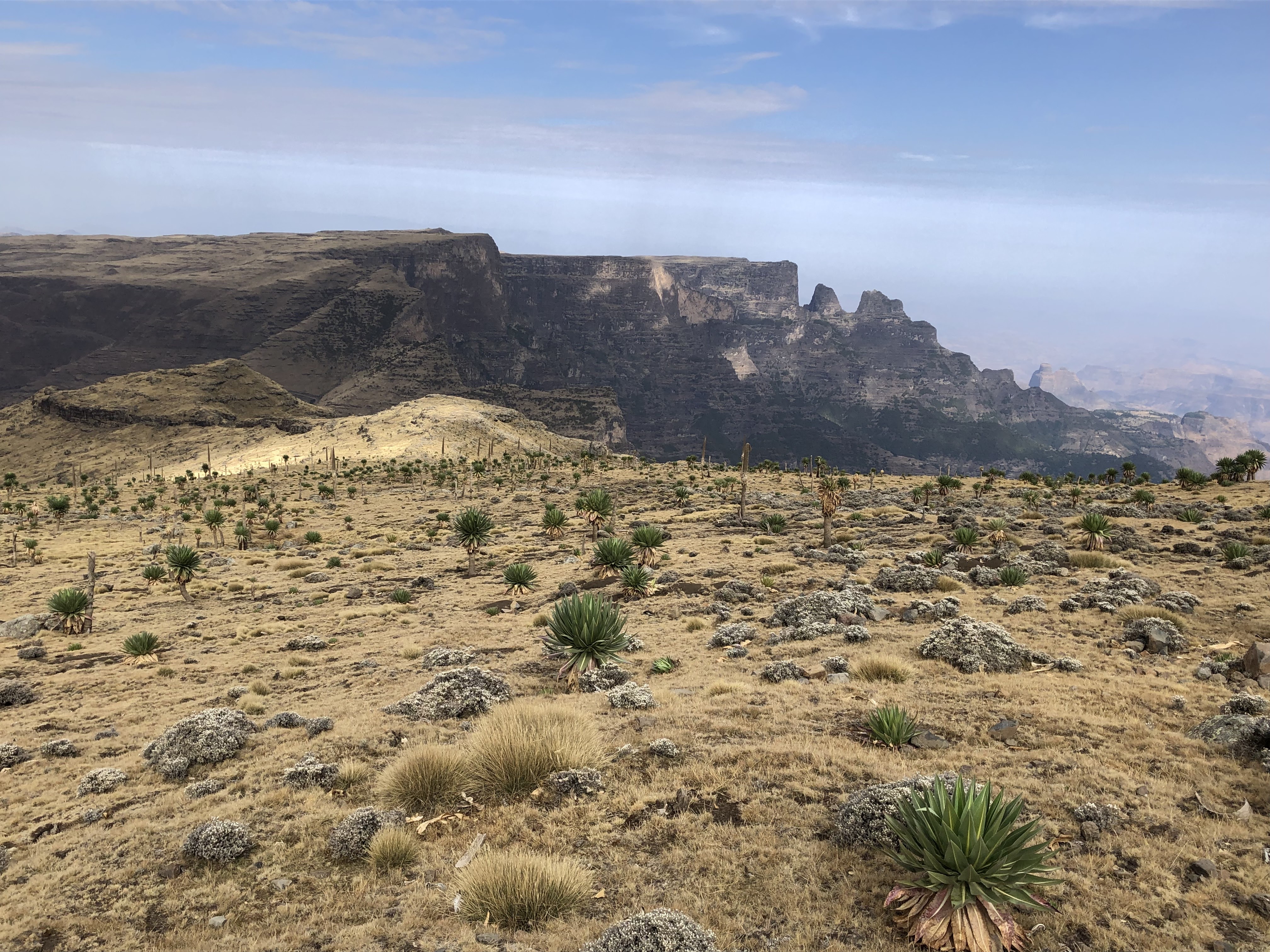
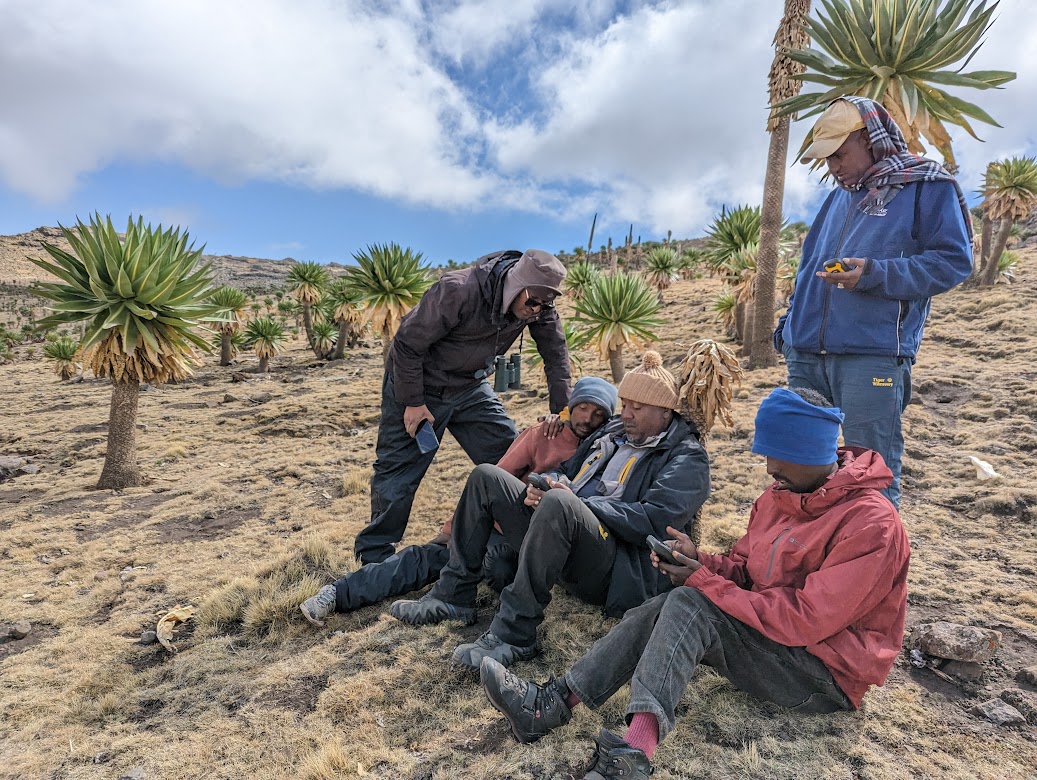
Setting traps, checking the trap line every three hours during the night, handling the captured wolves, packing and moving the entire camp to the next pack territory after the each capture made this trip perhaps my most intense week of fieldwork ever. The expectation of a wolf in a trap kept us awake each night… Each area also came with its struggles: in Kechemo Buahit, our car broke down on the way up and the driver quickly unloaded our gear at the camp before leaving us behind (at least, we made it to destination); in Sebat Minch, hail hit us as we were setting the third trap (it would hail regularly every day after that); in Chenek, we had the steepest slopes and lots of rain (despite it being the dry season!); in Ayenameda, we were rapidly surrounded by dozens of curious children—young shepherds—and their herds of sheep and cows (we had to wait until they were all gone to start setting the traps). Thanks to a great teamwork, over a week, we captured six wolves and successfully collared one adult from each pack. Two focal packs are left, Gich and Terefe, which territories are accessible only by mules.
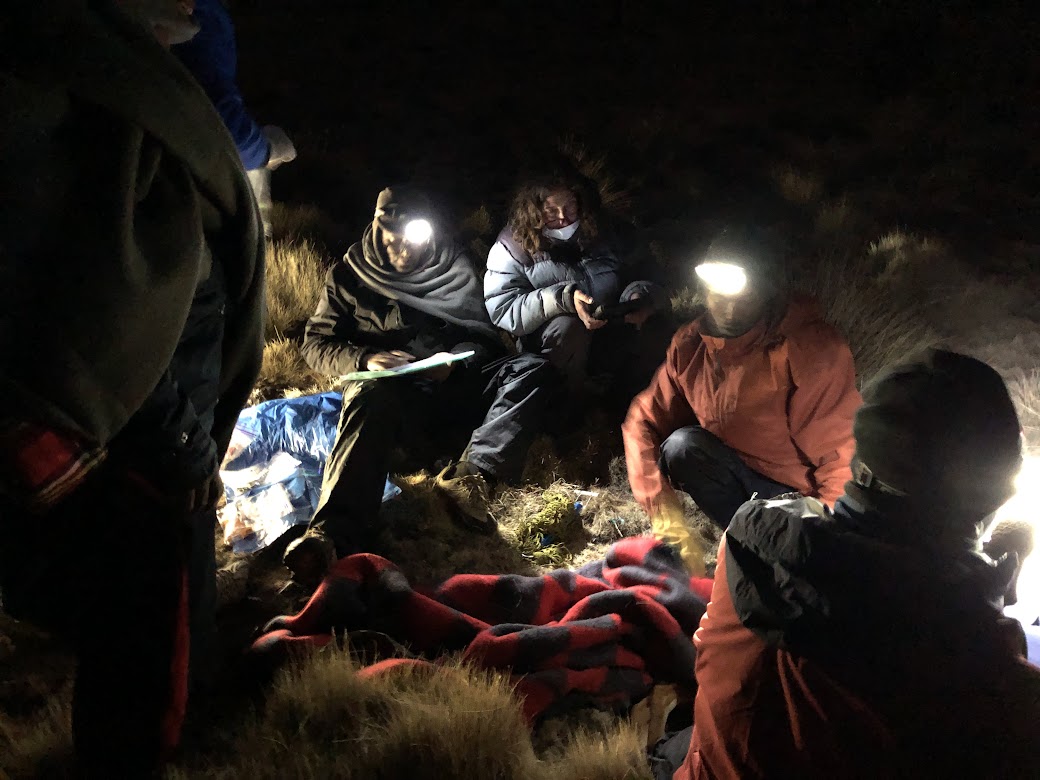
At our last camp within the Ayenameda pack, we asked the children gathered around our tents to name the last wolf we captured. One of them suggested “Yelefacho”, which he explained was meant as “let’s keep them [the wolves] roaming freely in the mountains.” These children know Ethiopian wolves very well, as they share the same land, and each of them has seen a wolf before. It is not very common, but sometimes, wolves might kill lambs. The wish to keep the wolves in these mountains might not be shared by everyone… In Simien Mountains National Park, livestock grazing and cutting guassa is forbidden, but law enforcement is often lacking. In Ayenameda, where these young shepherds should actually not be present, the vegetation was heavily overgrazed. However, enforcing laws in the park sometimes backfires on wildlife, bringing resentment against the wolves, as they might be seen as the reason why access to resources is restricted. Getachew told us that the wolves in Ayenameda, Yelefacho’s pack, were elusive and afraid of humans. Protecting wolves, while also protecting the livehood of local communities… a difficult balance.

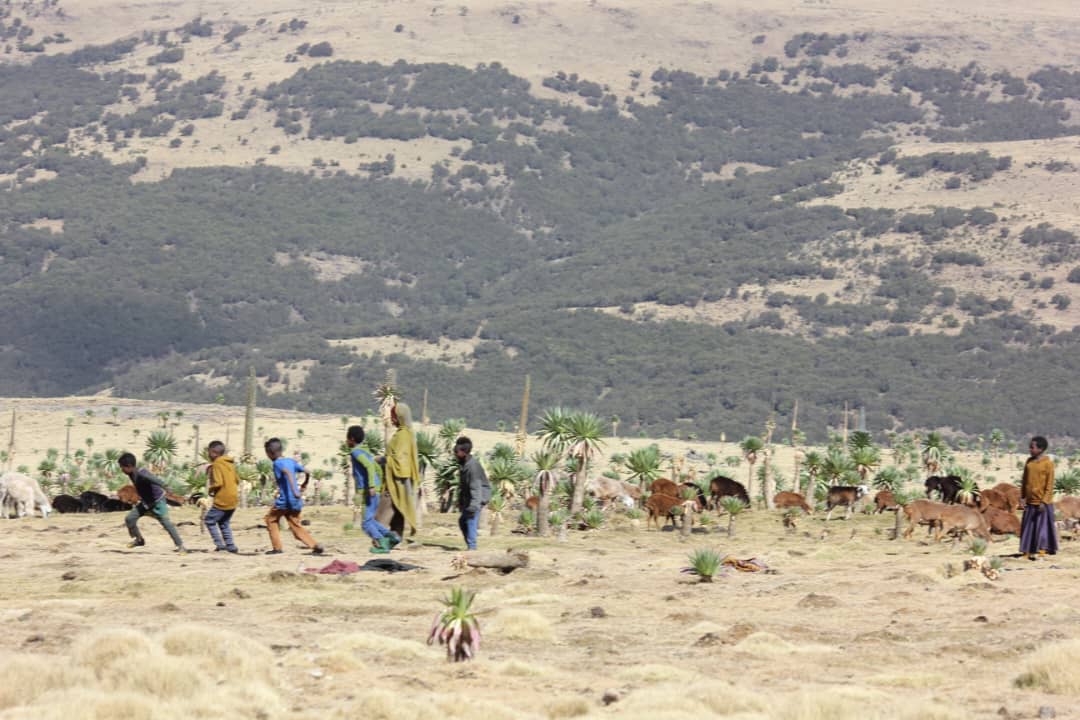
After we drove down the mountains at the end of the collaring session, I remembered Jorgelina telling us: “This trip has united us.” It was not only bringing together the EWCP Bale and Simien teams, but also members of the Ethiopian Wildlife Conservation Authority and of Simien Mountains National Park. It was research staff, vets, wolf monitors, scouts and guards working together in hope of learning more about the Ethiopian wolf in Simien. My second field trip in Ethiopia ended but, definitely, the need to work hand in hand lingers in my mind. Until next time…
To learn more about EWCP’s research and conservation activities, follow us on Twitter @KyKebero @Arctic_paws @ClaudioSillero @MarinoJorgelina and visit our website: https://www.ethiopianwolf.org/programme